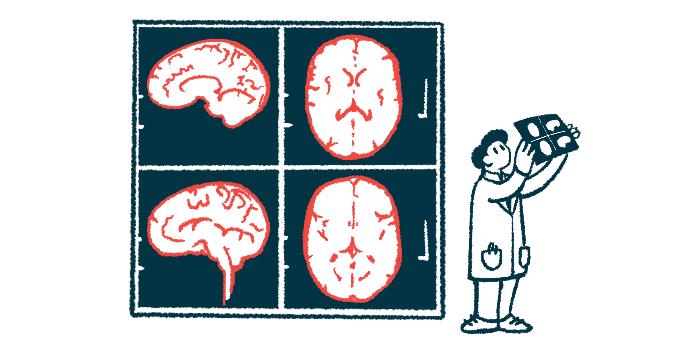Fabry disease may be among causes of aseptic meningitis: Study
Conditions linked in rare instances, researchers say

Fabry disease, in rare instances, may be among the causes of aseptic meningitis, a condition in which there is inflammation of the membranes covering the brain and spinal cord that’s not caused by an infection, a study found.
The mechanisms underlying inflammation of these membranes, called the meninges, in Fabry patients are largely unknown. The researchers said the condition may be caused by the abnormal accumulation of fatty substances in the membranes, or by pro-inflammatory signals that are higher than normal in these patients. Their study, “Aseptic meningitis and Fabry disease,” was published in Annals of Clinical and Translational Neurology.
Fabry disease is caused by mutations in the GLA gene that result in a deficiency in the alpha-galactosidase A (alpha-Gal A) enzyme. This enzyme is responsible for breaking down fatty molecules, mainly globotriaosylceramide (Gb3), but its absence or reduced activity causes these fatty molecules to accumulate to toxic levels inside cells.
Ultimately, this results in inflammation and organ damage, mainly in the kidney, heart, and nervous system.
The most common neurological symptoms of Fabry are pain due to nerve damage, dysfunction of the autonomic nervous system — part of the nervous system that regulates involuntary processes in the body, including heart rate, breathing, or digestion — and stroke. However, rarer neurological manifestations, including aseptic meningitis, may also occur.
Fabry not commonly seen among causes of aseptic meningitis
The researchers examined data from 107 Fabry disease patients seen at their center in Paris from 1995 until September 2023, seeking to learn about the prevalence of aseptic meningitis and the clinical presentations of patients with the complication.
Four patients, two men and two women, had at least one episode of aseptic meningitis. That corresponds to a prevalence of 3.7% in this population.
Three of the four patients had a familial history suggestive of Fabry disease, including family members with kidney failure, sudden death, or hypertrophic cardiomyopathy — a condition in which the heart muscle becomes thickened. Still, most patients were the first in their families to receive a formal diagnosis of Fabry disease.
Although Fabry disease is not commonly seen as a possible cause of aseptic meningitis, mostly due to the rarity of the disease, previous studies have suggested that Fabry patients may develop the condition. Headaches may be a sign of meningitis, and were indeed present in all four patients.
Other manifestations included high levels of immune cells, mostly lymphocytes, in the spinal fluid, indicative of inflammation in the brain and spinal cord. Damage to nerve fibers visible in MRI scans, stroke, or narrowing of large blood vessels were also reported.
The researchers also conducted a systematic review of available literature covering 29 patients from 23 published studies. They found that the median age of people with aseptic meningitis was 29, and that 58.6% of the patients were men.
In 82.8% of the patients, the diagnosis of Fabry disease was unknown before the discovery of meningitis.
A large proportion of patients (41.4%) had acute meningitis with meningeal syndrome, marked by headache, fever, and stiff neck. About one quarter (24.1%) had acute meningitis associated with localized neurological deficits but no meningeal syndrome, and the remaining had chronic forms of meningitis.
Increases in spinal fluid immune cells was considered mild in a majority of patients. Brain MRI revealed that most (57.1%) had a recent episode of stroke coexistent with meningitis, and 40.7% had identifiable damage in nerve fibers. Some 17.2% of patients had a narrowing of large arteries.
The presence of meningitis along with inflammatory or stroke-related brain damage often raised the possibility of differential diagnoses, which frequently included multiple sclerosis (31%), viral or bacterial infections (22%), and blood vessel inflammation in the brain and spinal cord (17.9%).
While the mechanisms leading to meningitis in people with Fabry are not well understood, the researchers put forward a few hypotheses, including the accumulation of fatty molecules in the meninges and an inflammatory reaction triggered by those fatty molecules.
The team also noted that a rupture of the blood-brain barrier, which protects the brain from harmful substances in the blood, during a stroke could explain the development of meningitis. But they said stroke is unlikely to increase immune cell numbers in the meninges to the levels observed in the patients they studied.
“The pathophysiological mechanisms underlying the [increases in immune cell levels] remain partly misunderstood, but could constitute further evidence of the multisystemic pro-inflammatory nature of [Fabry disease],” the researchers wrote.







